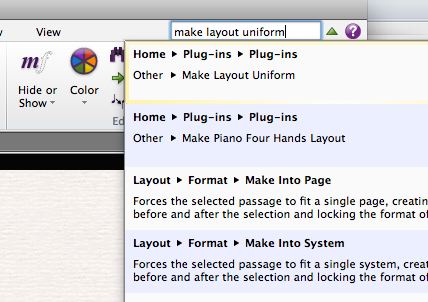Philip wrote:Critique wrote:It certainly doesn't seem to be getting many positive reviews. The biggest complaint seems to be that they've changed things that used to be simple, and made them difficult to do. That and the fact that it isn't exactly intuitive.
It is really hard to find out how to do simple things in some of the apps, like searching in the 'Windows Store' or that you have to right click to bring up a menu just for simple items like 'New'.
To search in the Store, just start typing. Otherwise, it's the same as every other app - 'Search' on the right-edge Charms bar.
'New' what?
I do find this idea of dismissing Windows 8 for not being 'intuitive' very quaint indeed, and I don't really understand people think they're saying when they make that judgement. There's nothing at all 'intuitive' about Mac OS X, for example; someone with no knowledge of computers couldn't simply take one look at OS X and know exactly how to get started.
The issue is that people don't like change, and there are many changes indeed in Windows 8 over previous versions. But there's an enormous amount that, conceptually, is more or less identical to Windows 7, so it's not a completely alien environment. The issue is that new things need to be learned, and some old ways of doing things need to be 'unlearned'. That doesn't make it 'unintuitive'; it just means that there is a learning curve for those used to doing things a certain way.
Having seen young kids, elderly persons with little or no computing experience, and even those with learning difficulties, using Windows 8, on tablets and notebooks, the ease with which they take to the big grid of dynamic tiles on the Start Screen, the idea of 'Charms' being a universal UI feature, the simplicity of the Windows Store, and so on, it appears to me that Windows 8 is actually much, much more intuitive than Windows 7. The frustrations that many people - including myself on various occasions - towards the Windows 8 way of doing things is largely because it's different to what's gone before. Those approaching the platform with a completely fresh eye seem to take to it much more easily than those of us who have been using Windows in some form for the last twenty years.
There's some research floating around regarding the 'cognitive load' of having to switch between two different user experiences in the same session, and how this is counterproductive; literally, it is claimed, this reduces productivity. As I'm not a doctor, I can only offer anecdotal information here. I currently use two Windows 8 devices regularly - a tablet and my touch-enabled desktop PC. I use the tablet as my main mobile device, so I'm frequently switching back and forth between the Desktop (to use my legacy Windows programs such as Expression or Office) and the Modern UI (which is perfect for touchscreen devices and for content discovery and consumption).
On my desktop PC, however, 99% of my time is spent on the desktop. When I need to open an app, I press the Start button on my keyboard, type the first few letters and hit enter. I don't need to regularly interact any further with the Modern UI besides that. It is completely possible to avoid the Modern UI almost entirely on a regular basis, and even interactions with the Start Screen don't have to be drawn out or exhausting. For all intents and purposes, my desktop PC looks, acts and feels like a Windows 7 PC, but with the massive under-the-hood performance improvements, fantastic integration with the cloud and - if I need it - the facility to download apps and games from an incredibly easy-to-use app store.
So I think a lot of the frustrations that people experience are understandable for those that are having to learn new ways of doing things, but once you get into the swing of things, these processes become every bit as natural and - if you want to use the word 'intuitive' once you've got into the habit. Unlike Dr Lobster for example, I no longer experience issues with the hot-corners as my hand effortlessly glides the cursor to them, just as easily as it would glide to the Start button in Windows 7, for example.
Of course, there's PLENTY of room for improvement. As the Lobster noted, it's a stupid hassle to have to pin apps to the Start Screen one at a time from the all-apps list. Some of the integrated apps like Xbox Music are terrible. Customisation options are limited. I'm completely open about that. I regularly tweet about what irks me, what isn't working as it should, what little bugs or niggles I've spotted here and there, or what I simply don't like. Windows 8 isn't perfect. Far from it.
But having been using Windows 8 since the Developer Preview, I'm completely confident that the benefits far outweigh the positives, and that it's worth sticking with it, rather than just getting frustrated because it's all so
different.

